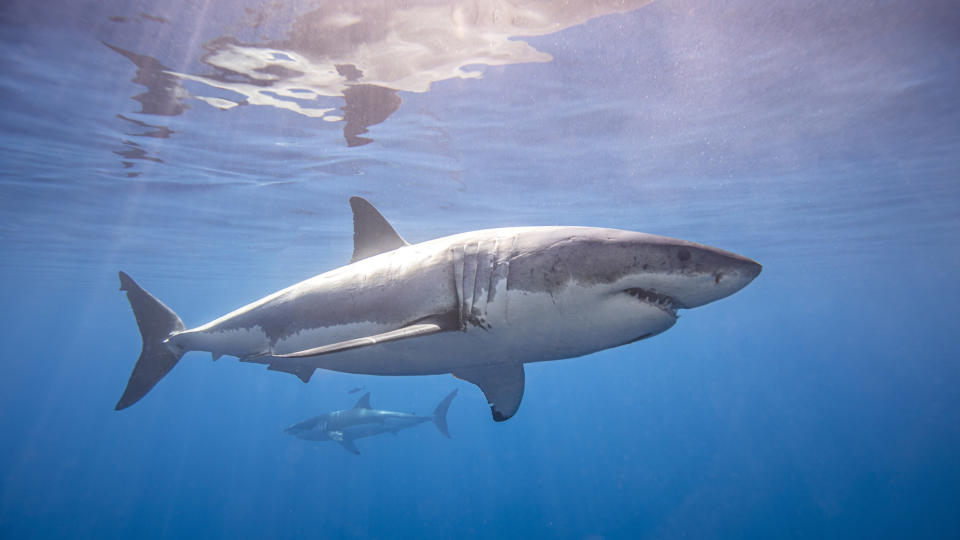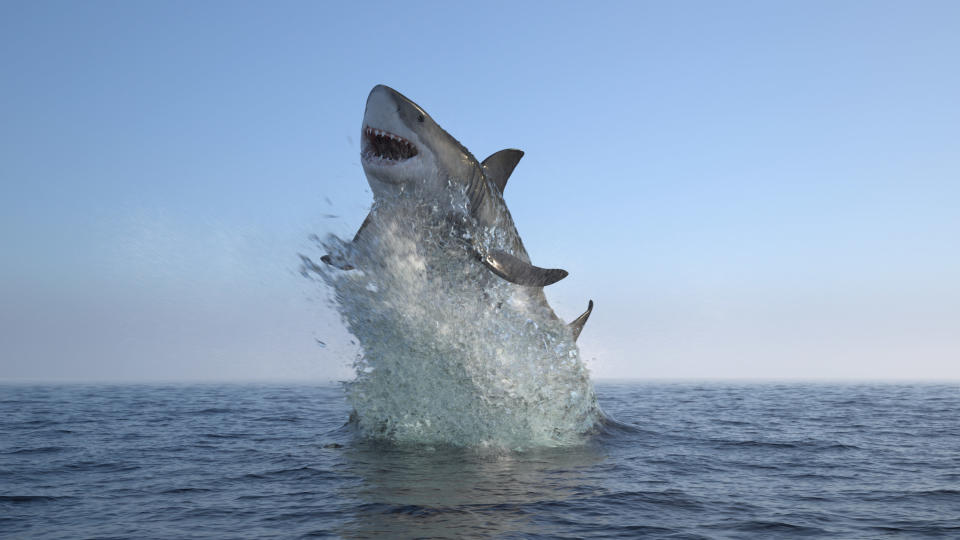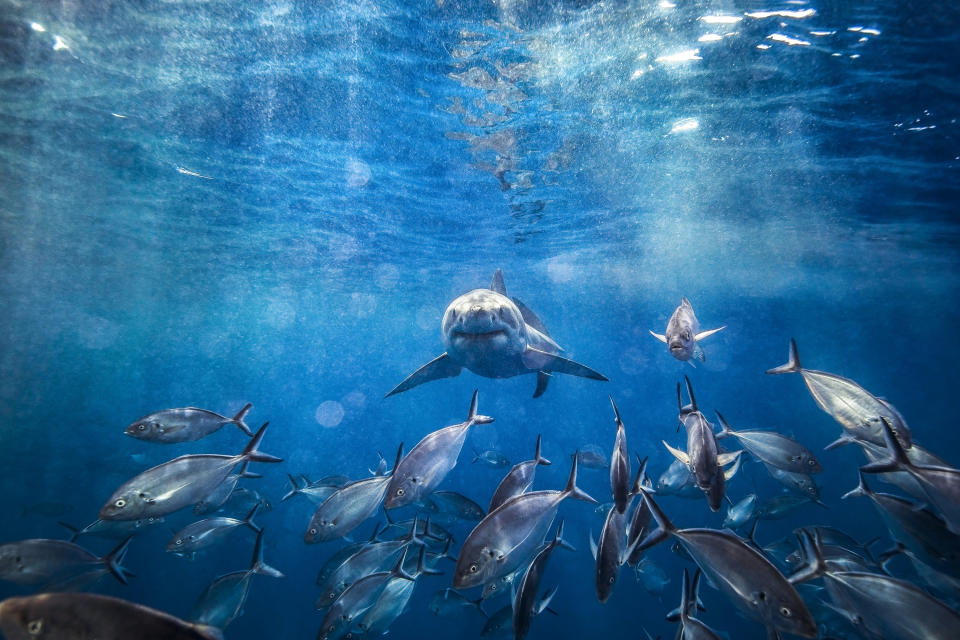70 Shark Facts That Will Make You Say "Oh, These Guys Are Pretty Cool Actually"
1.In its lifetime, a shark can have up to 30,000 teeth. They are continuously being replaced and shifted within the mouth.
2.Whale sharks can live to be 100 years old.
3.Sharks are colorblind.

4.Sharks have been in existence for over 400 million years.
5.Sharks have no bones in their bodies. They are made of a rubbery tissue called cartilage.
6.There are 440 different species of sharks.
7.Sharks have a sense called electrosense, which is the ability to sense electric signals. This gives them an advantage when searching for prey.
8.Sharks are hypersensitive to pressure changes in the water. They can notice the slightest changes via specialized cells with tiny hairs in them.
9.Great white sharks can weigh up to 5,000 pounds.
10.Whale sharks are approximately the size of a school bus.
11.Tiger sharks, aka the "garbage cans" of the sea, will literally eat anything, which makes them particularly dangerous to humans.
12.Sharks can store food in their stomachs for months
Discovery Channel
13.A shark's skin is tough and thick because it is made of a protein called collagen. The whale shark's skin can be up to 10 centimeters thick!
14.The female shark pregnancy can range from 5 months to 3.5 years, depending on the specific species.
15.If a shark embryo develops teeth, it will partake in intrauterine cannibalism, meaning it will eat its siblings inside the womb.
16.Female sharks tend to be larger than male sharks.
17.The bull shark is able to survive in freshwater.
Discovery Channel
18.A blue shark can carry up to135 pups at once.
19.The thresher shark has a tail that can grow to about half its body length. The tail serves as a sword.
20.Sharks have a highly evolved sense of hearing, which allows them to hear low-frequency sounds from up to a quarter-mile away.
21.Many sharks found in the depths of the ocean make their own flashlights via bioluminescence.
22.The epaulette shark can use its fins like legs, to walk, when the tide is too low to swim.
23.Young sharks spend seven years in a shallow water "nursery" where they grow and learn.
24.The odds of getting attacked and killed by a shark are 1 in 3,748,067.
25.Most female sharks have much thicker skin than males because male sharks often bite during mating.
26.The Greenland shark is the slowest-moving fish in history, but reindeer, polar bears, and extremely fast seals have been found in its stomach.

27.Hammerhead shark babies actually have soft heads when they're born.
28.Sharks can be introverts or extroverts.
A study was done that proved sharks have individual personalities. More social sharks will band together and communicate with a group, while more introverted sharks will hide away on their own and camouflage.
29.Whale sharks can give birth to several hundred pups in one litter.
30.Sharks are one of the slowest species to reproduce.
Discovery Channel
31.A Great White named Lydia swam across the entire Atlantic Ocean, from one side to the other, while being tagged and tracked by scientists.
32.Sharks respond to a special sound that injured fish make, so they can seek out easy prey.
33.Shark teeth are covered in fluoride, so in a way, they kind of have their own built-in toothpaste.
34.Nurse sharks are extremely lazy. They spend most of their time resting on the sea floor and even stack up on top of each other.
35.Great white sharks found off the coast of Seal Island in South Africa will jump 10 feet out of the water to attack unsuspecting seals.
36.The great white has more than 300 razor-sharp teeth in its mouth.
37.Sharks don't have scales covering their skin; they have tiny teeth.
Sharks don't have regular scales; they have dermal denticles, which are much more similar to teeth than regular fish scales. The enamel crown, i.e. the toothy part, anchors the dermal denticle to the skin. These tooth-shaped scales allow them to move swiftly through water without collecting barnacles and algae.
38.Great whites can also detect one drop of blood in 25 gallons of water and can sense tiny amounts of blood in the water from three miles away.

39.At more than 20 feet long, great white sharks are the largest predatory fish on earth.
40.Lantern sharks can glow in the dark.
41.Some female sharks retain sperm in their bodies after mating and will use it to reproduce later on.
42.Sharks can live in freshwater by absorbing extra water and then urinating it into the streams around them.
43.Some female sharks can reproduce without any contact from a male, which is known as parthenogenesis.
44.When gray nurse sharks are born, the first baby shark to develop consumes its siblings as they hatch.
45.Despite its massive size, the whale shark is a filter feeder, subsisting on tiny, microscopic plankton.
46.The goblin shark lives along outer continental shelves and underwater mountain ranges in areas too deep for human exploration.
Discovery Channel
47.Extracts from a shark's gall bladder are used in the treatment of both cataracts and acne.
48.A shark's bite can generate 40,000 pounds per square inch of pressure.
49.Hammerhead sharks can easily adapt to a change in water temperature and can be found from polar regions to the Florida coast.
50.The hammerhead shark's odd-shaped head not only allows for a better visual range than other sharks, but also spreads its sensory organs, allowing it to better detect prey.
51.The basking shark, which is a filter-feeder like the whale shark, can grow up to 33 feet long and can weigh as much as a four-passenger airplane.
52.Blue sharks will overeat until they regurgitate their food, and then will continue to eat.

53.In 1978, archaeologists uncovered remnants of shark bodies under the ruins of the Aztec Great Temple.
54.Great white sharks eat around 11 tons of food each year. In comparison, an adult human eats around half a ton.
55.Thresher sharks flail their tails to stun prey in a movement similar to the cracking of a whip.
56.Some female sharks use sperm from several different males to reproduce. Pups are half-siblings even though they are born in the same litter.
57.Despite being so big, the whale shark is a sneaky little thing.
The female whale sharks are especially sneaky. Sightings of whale sharks are 70% male, and no one has ever seen a female give birth.
58.Mako sharks have been clocked swimming at speeds of 43 mph.
Pixar
59.A great white shark will roll its eyes into the back of its head when attacking to protect its eyes from debris.
60.Sharks are opportunistic eaters, eating whether or not they are hungry.
61.Sharks' sight lines span nearly 360 degrees. They have only two blind spots: one in front of the snout and the other directly behind the head.
62.Angel sharks are also known as sand devils because they dig themselves into the ocean bottom and wait for unsuspecting fish to pass before attacking.
63.Scientists only discovered the megamouth shark in 1976. Since then, there have only been 41 known sightings of the species.
64.You are more likely to die from falling out of bed than because of a shark.
Like, 600 Americans a year die by falling out of bed, and on average less than 6 people are killed by a shark every year worldwide.
#NotAllSharks
65.By comparison, humans kill 100 million sharks every year — or 11,000 every hour.

66.Tiger sharks have such strong bites that they can break through the shell of a sea turtle.
67.The megalodon, which lived from 16 million to two million years ago, grew up to 50 feet long and had the strongest bite of any living creature ever.
68.Out of the known species of shark, only 20 are known to attack humans.
69.The dwarf lantern shark is the world's smallest shark at around 8 inches long.
70.Sharks actually have an excellent memory.
Universal Pictures

